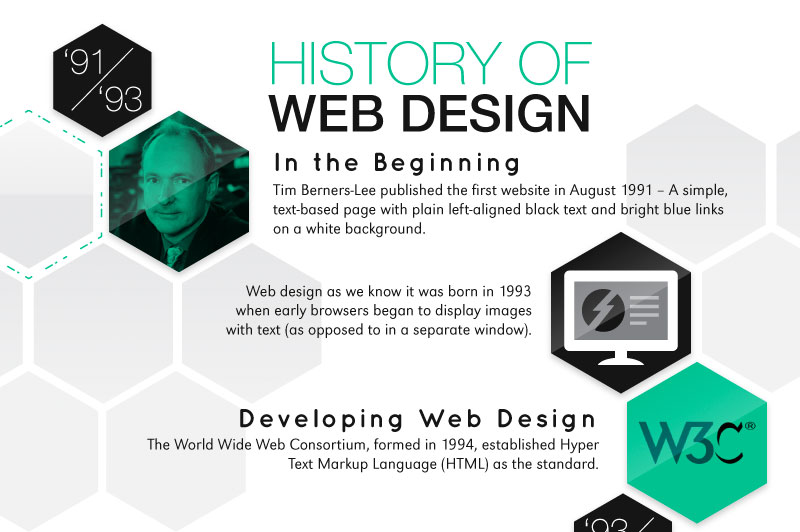The Growth Of Web Site Style: From Earlier Times To Currently
The Growth Of Web Site Style: From Earlier Times To Currently
Blog Article
Write- https://www.mckinsey.com/business-functions/marketing-and-sales/our-insights/the-new-marketing-model-for-growth-how-cpgs-can-crack-the-code Written By-Kahn Trolle
In the past, internet sites were simple and focused on information. Navigation was direct, and design was for desktops. Currently, customer experience is crucial. Data guides layouts for very easy navigation. Responsive designs fit different devices. Today, dark mode minimizes pressure, and minimal food selections improve navigation. Interactive features involve customers, and vibrant visuals stand out. AI combination improves engagement. See just how layout has progressed to improve your online trip.
Very Early Days of Web Design
In the very early days of web design, simplicity preponderated. SEO For Healthcare Website were basic, with minimal shades, typefaces, and designs. The emphasis was on giving info as opposed to flashy visuals. Customers accessed the web with slow dial-up connections, so speed and functionality were crucial.
Navigation menus were straightforward, commonly located on top or side of the page. Websites were made for computer, as mobile browsing wasn't yet widespread. Material was king, and developers focused on easy readability over complex design aspects.
HTML was the main coding language made use of, and designers needed to work within its restraints. Computer animations and interactive features were very little compared to today's criteria. Internet sites were fixed, with little dynamic material or customized user experiences.
Surge of User-Focused Style
With the advancement of website design, a shift in the direction of user-focused layout concepts has actually come to be significantly noticeable. Today, creating internet sites that prioritize customer experience is vital for involving visitors and accomplishing business objectives. User-focused style involves understanding the demands, choices, and habits of your target audience to customize the website's design, content, and includes appropriately.
Designers currently carry out extensive research, such as individual surveys and use screening, to collect insights and comments straight from users. This data-driven strategy helps in producing instinctive navigation, clear calls-to-action, and aesthetically enticing user interfaces that reverberate with site visitors. By placing the user at the center of the style process, internet sites can provide an extra personalized and delightful experience.
Receptive layout has actually additionally emerged as a crucial element of user-focused layout, ensuring that sites are optimized for various gadgets and screen sizes. This flexibility improves ease of access and functionality, satisfying the diverse methods users connect with websites today. In essence, the increase of user-focused design signifies a shift in the direction of developing electronic experiences that prioritize the needs and assumptions of the end user.
Modern Trends in Web Design
Check out the current fads shaping website design today. One noticeable trend is dark setting style, using a sleek and contemporary look while reducing eye stress in low-light settings. One more vital fad is minimal navigating, simplifying food selections and improving individual experience by concentrating on essential elements. Integrating micro-interactions, such as computer animated buttons or scrolling effects, can produce an extra appealing and interactive internet site. Responsive style continues to be essential, making certain seamless user experiences across different gadgets. Additionally, utilizing bold typography and asymmetrical layouts can include visual rate of interest and draw attention to particular material.
Integrating AI technology, like chatbots for customer assistance or individualized suggestions, boosts customer involvement and enhances procedures. Ease of access has likewise become a significant fad, with developers prioritizing comprehensive design practices to cater to varied individual requirements. Welcoming sustainability by maximizing site efficiency for speed and effectiveness is an additional emerging trend in web design. Teaming up with individual comments and information analytics to repeat and enhance design continually is vital for staying pertinent in the ever-evolving digital landscape. By embracing these modern-day trends, you can create an aesthetically appealing, straightforward website that reverberates with your audience.
Final thought
As you review the development of site design from the early days to currently, you can see exactly how user-focused design has become the driving force behind modern-day patterns.
Accept the journey of change and adjustment in web design, constantly keeping the user experience at the center.
Keep present with the current trends and modern technologies, and never ever stop advancing your method to develop visually stunning and straightforward sites.
Evolve, adapt, and create - the future of web design is in your hands.
